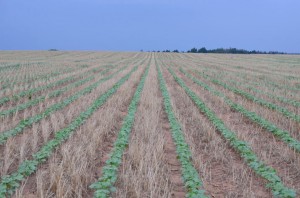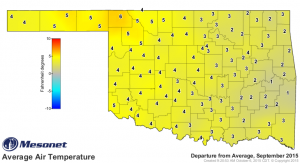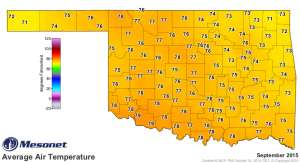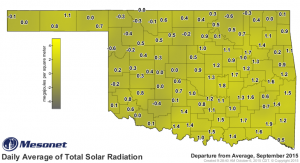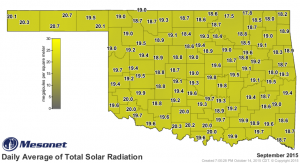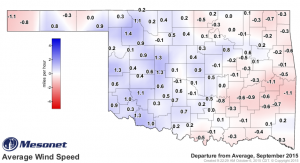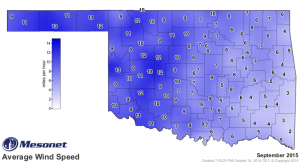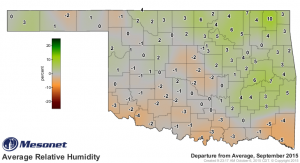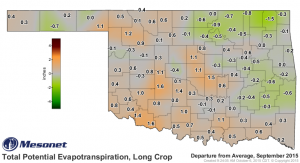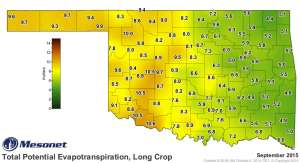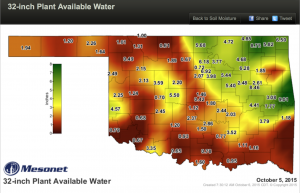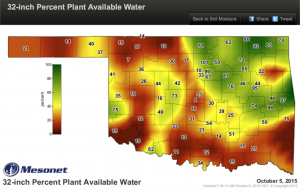Farmers roll the dice every year when they plant. Remember back to all those rains in May. Those rains came right when it was time to get summer crops like cotton, sorghum, sesame, peanuts, watermelons, and okra planted. No worries about late planting a crop like okra, since it’s harvested continuously as young pods. For all of the other crops, late planting is a gamble with fall weather and crop maturity.
Every crop, every variety has a different amount of heat units it takes to reach maturity. Late planting and growing season stresses add to the risk that there won’t be enough heat units in the fall to reach maturity.
This year farmers that gambled on a warm September came up winners . The Mesonet Long-Term Average Maps show that September was warmer than average across the entire state with averages mostly in the mid-seventies range.
Above average sunlight levels contributed to September’s air temperatures being above the 15-year average.
Wind speeds were slightly above and slighty below average, depending on where you live in Oklahoma. Lower wind speeds in Oklahoma are usually beneficial for plants. Plants lose less water and have less stress on them.
Relative humidity like wind was a mixed bag with lower than average humidities in the southwest and higher humidities in the north and east.
Air temperature, sunlight, wind speed, and relative humdity all go into calculating the reference evapotranspiration. This is a calculated potential water loss from the soil surface (evapo-) and water given off by plants through their leaves (-transpiration). The map below shows the deviation from average for Tall Crop Reference Evapotranspiration. A tall crop is one that mimics a tall alfalfa crop canopy. Potential evapotranspiration rates were above the 15-year average in the orange areas on the map and below average in the green areas. The second map shows potential evapotranspiration rates in total inches of water for September.
The Tall Crop Reference Evapotranspiration is referred to as potential evapotranspiration or water demand, because the actual crop water use varies by plant species, variety, and soil moisture level. Reference Evapotranspiration rates are based on having a well watered crop with high soil moisture.
The actual water loss from plant and soils in areas of the state with low soil moisture will be lower than the estimated potential evapotranspiration. So in some of the dryer areas limited moisture may have reduced crop yield. On the plus side, the daily water demand goes down as crops mature, so hopefully there was enough moisture for crops to reach maturity with good yields and quality.
September was a month with varied soil moisture across the state. These maps show Plant Available Water in inches available for plant use and percent stored in the soil column from the surface down to 32 inches.
Farmers who rolled the dice on late planting in 2015, came up winners! September has been a month that came in above average in heat units. Those were critical heat units to get crops to full maturity.

